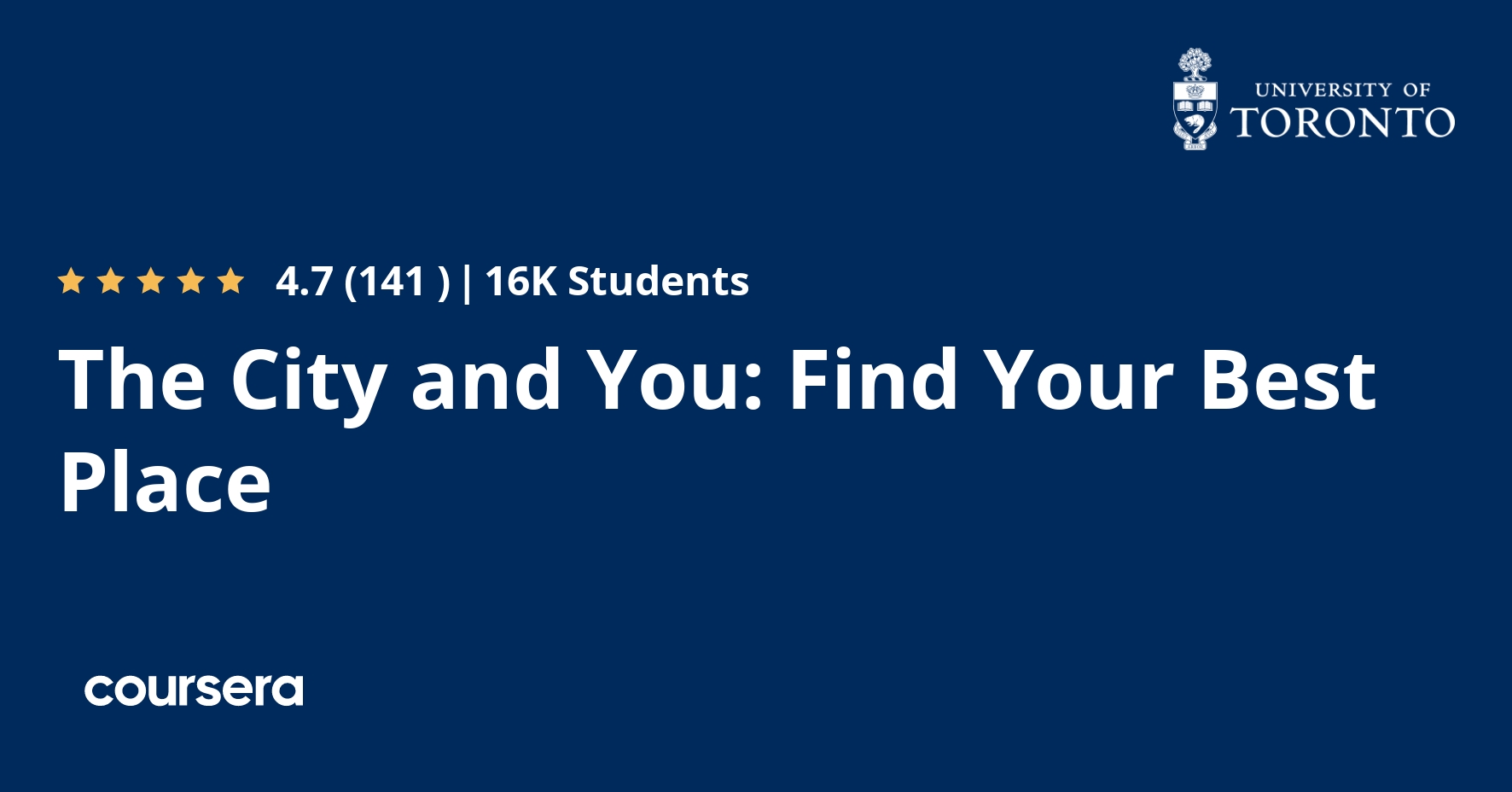Description
Welcome to The City and You: Find Your Best Place. I’m excited to have you in the class and look forward to your contributions to the other learners in our community.
This free course will provide the knowledge and the tools needed to understand what cities do, why they matter, the forces shaping the greatest wave of urbanization in history, and how to pick the right place for you. The course will also help you develop critical thinking skills. We’ll accomplish this by providing evidence of the importance of cities, and why and how they matter to you. Then we’ll ask you to apply what you’ve learned in an exercise which will help you assess your own community and find your best place.
This course is accessible and open to anyone who is interested in learning more about cities and the ways they affect our lives. It is organized around five key modules: (1) Why Cities Matter, (2) A World of Cities, (3) The Creative City, (4) The Divided City and the New Urban Crisis, and (5) How to Find the Best Place for You.
After completing the course, you will be able to:
(1) Identify why cities are the drivers of economic prosperity;
(2) Explain the drivers and implications of fast-growing urbanization worldwide;
(3) Outline the key characteristics of a creative and innovative city;
(4) Describe the social divides and challenges facing cities and the solutions cities are using to address them; and
(5) Recognize the trade-offs of staying in your current city versus moving, and identify the best place for you and your family to live.
Of course the world has changed a great deal since I developed this course. The Global COVID-19 Pandemic is affecting cities, businesses and people around the world. It is something I have been writing about and working with mayors, city managers, economic developers, urban leaders and communities across the globe. I have put together a new module on Cities and the Coronavirus to help you better understand the ways in which the Covid-19 crisis is impacting cities and how you can best understand and deal with that.
I’d like to wish each and every one of you good luck as you get started on this journey. I hope you enjoy the course!
What you will learn
Why Cities Matter
This session will help you to understand the importance of cities for both the economy and society, as well as, you and your family. Today, more than three and a half billion people live in cities, which is more than half of the world’s population. That figure is projected to rise to as many as 10 billion people or 85 percent of the world’s population over the next century. Cities are our premier platforms for generating new innovations, higher levels of economic growth, and new and better jobs. We will discuss why and how cities are important, and why picking the right city to live is important to your career, well-being, and life.
A World of Cities
This session will help you understand the opportunities and challenges of urbanization around the world. Global urbanization has the power to lift living standards, create economic opportunity and jobs, reduce pollution, improve energy efficiency, and make the world safer. But, many cities in the developing world remain poor, with millions of people crowded into global slums.
The Creative City
Cities have been the fonts of creativity since the dawn of civilization. The clustering of creative people in them and the diversity they bring is what drives key advances in arts, culture, and technology. These wellsprings of human progress have always occurred in our great cities from Athens and Rome to London, New York, and the emerging economies in Asia. This session will help you better understand how the clustering of diverse groups of creative people in cities spurs artistic achievement, scientific and technological advance, and human progress.
The New Urban Crisis
This session will help you better understand the New Urban Crisis and the growing economic divides that challenge cities today. In the second half of the 20th century, society was divided between poorer cities and richer suburbs. But, over the past decade or so, affluent and educated people have flocked back to urban centers pushing poverty out to the suburbs. Today, middle-class neighborhoods are in decline and our societies are defined by small areas of concentrated advantaged surrounded by much larger areas of concentrated disadvantage spanning the city and its suburb alike.





